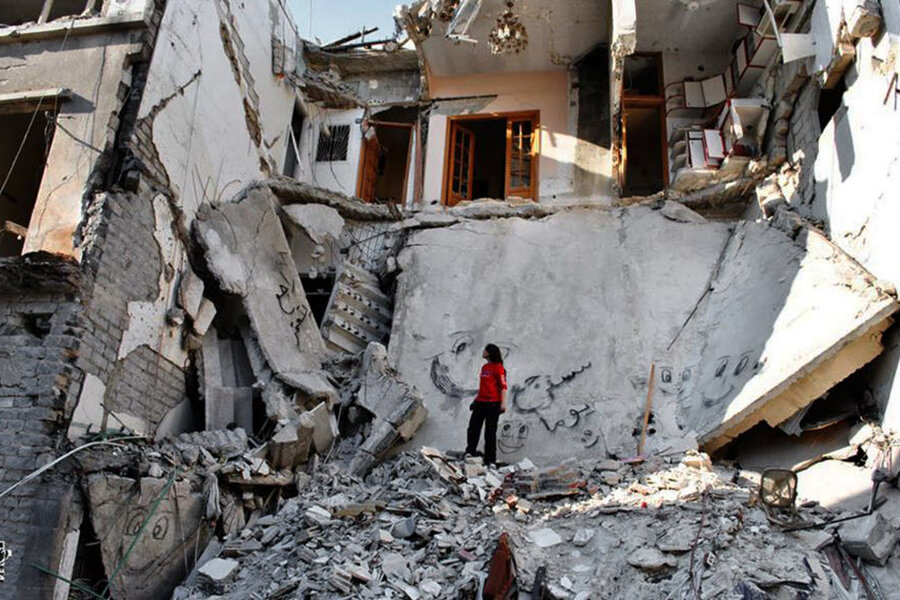Assad's forces bomb rebel-held neighborhoods in Homs
Loading...
| Beirut
Syrian warplanes and ground forces bombarded rebel-held neighborhoods in Homs on Saturday as part of the military's ongoing campaign against opposition fighters in the heart of the country's third largest city, activists said.
The army of President Bashar Assad has been on the offensive in recent weeks, reclaiming some of the territory it has lost to the rebels in the past year.
The military, building on its capture of the strategic town of Qusair between the Lebanese border and Homs at the beginning of this month, has overrun a number of villages nearby. It also has hammered the center of the city, a rebel stronghold since the uprising against Assad began in March 2011.
The Britain-based Syrian Observatory for Human Rights said air strikes hit two districts in the center of the city. It said the army also fired mortar shells into the neighborhoods.
An activist from one of those neighborhoods, Khaldiya, said tanks were also involved in the bombardment, and that the military was trying to push into the area from all sides.
Shelling has been continuous since 10 a.m. in that area and in nearby Old Homs, activist Tariq Bardakhan told The Associated Press via Skype.
"Today is one of the most violent days that Homs has witnessed since the beginning of the revolution," he said.
In an activists' video of the bombardment, several large explosions can be heard as plumes of grey smoke rise from buildings in a densely built-up area of the city.
The narrator of the video says: "These are heavy explosions that hit Homs, God is great." Another shell lands and smoke can be seen rising from behind a mosque. Two minarets are seen in the distance and the narrator says they belong to the historic Khalid Ibn al-Walid mosque in Khaldiya.
The video was posted on the Internet on Saturday and appears consistent with AP's reporting from the area.
The Observatory confirmed clashes around the mosque, and said that part of the building, which dates back to the 13th century and has been damaged in previous fighting, was engulfed in flames.
The Observatory said both sides have sustained casualties, but did not have numbers.
Syrian state TV said the army has had "great success" in the battle for Homs after "killing many terrorists in the Khaldiya district."
Syrian state media refers to rebels fighting to oust Assad from power as "terrorists" and say they are mercenaries of the West and their Gulf Arab allies who are conspiring against Damascus.
The Observatory says more than 100,000 people have been killed in the Syrian conflict since it began as peaceful protests against the Assad regime more than two years ago. It became an armed rebellion after the opposition supporters took up arms to fight the government crackdown.
The United Nations puts the number of civil war casualties at 93,000.
The military has gained momentum after capturing Qusair earlier this month with the help of fighters from Lebanon's Hezbollah group, capturing villages on the roads linking the capital to the border area with Jordan and Lebanon.
The rebels have also claimed some victories, marking a successful end to a two-week battle in the south Friday by capturing an army checkpoint in the city of Daraa, the provincial capital of the region that carries the same name.
Daraa is the birthplace of the uprising against Assad and rebels hope to one day launch an offensive from the area to take the capital.
The Observatory reported heavy fighting around the province on Saturday with clashes between the rebels and army troops concentrated in the town of Jassem after the army brought reinforcements.
Associated Press writer Yasmin Saker in Beirut contributed to this report.







